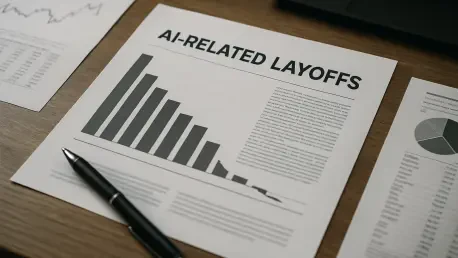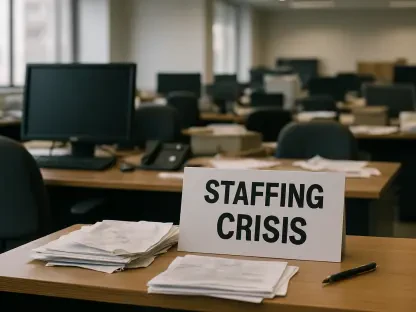In a world where machines increasingly outperform humans, what happens when your job becomes obsolete overnight due to artificial intelligence? Across the United States, from factory floors in Michigan to tech hubs in California, workers are waking up to a stark reality: AI is not just a tool for efficiency but a potential threat to their livelihoods. This seismic shift has caught the attention of lawmakers on both sides of the aisle, sparking a rare moment of bipartisan unity to confront an unprecedented challenge. A groundbreaking bill, introduced this year, aims to pull back the curtain on AI-driven job losses, forcing companies to report layoffs tied to automation and setting the stage for a national reckoning with technology’s impact.
The importance of this issue cannot be overstated. With projections estimating that AI could displace up to 97 million jobs by 2035, the economic and social fallout threatens to deepen inequality if left unchecked. This bipartisan legislation, spearheaded by Senators Josh Hawley (R-Mo.) and Mark Warner (D-Va.), seeks to create transparency by mandating reports on AI-related layoffs, providing critical data to shape future policy. As the nation grapples with balancing innovation and job security, this bill represents a pivotal first step in understanding the true scope of AI’s disruption.
Why Lawmakers Are Raising Concerns Over AI and Employment
The alarm bells are ringing loud and clear in Congress as AI reshapes industries at a breakneck pace. Senators from diverse political backgrounds share a common fear: unchecked automation could lead to mass unemployment, with some estimates suggesting a 20% spike in joblessness over the next five years. This concern transcends party lines, uniting conservative voices like Hawley, who prioritize economic stability, with progressive advocates like Bernie Sanders, who highlight the human toll of technological displacement.
State capitals are equally on edge, with local leaders witnessing firsthand how AI is altering the employment landscape. In states like Ohio, once-reliable manufacturing roles are vanishing as companies adopt AI-driven robotics, leaving communities scrambling for solutions. This growing unease has pushed the issue to the forefront of legislative agendas, with lawmakers determined to prevent a crisis before it spirals out of control.
The Scale of AI’s Threat to the Workforce
Beyond the political rhetoric lies a sobering reality: AI’s integration into sectors like retail, logistics, and even white-collar professions is creating an economic fault line. Data cited by congressional leaders paints a grim picture, with millions of jobs at risk of automation by the decade’s end. Customer service representatives, truck drivers, and data analysts—roles once considered stable—are now vulnerable to replacement by algorithms and machines.
The human cost of this transformation is already visible. In cities like Detroit, workers laid off due to AI-driven factory upgrades struggle to find new employment without updated skills, highlighting a widening gap between technological progress and workforce readiness. This disparity underscores the urgency for legislative action, as the potential for widespread economic disruption looms larger each day.
Unpacking the AI-Related Job Impacts Clarity Act and Other Proposals
At the core of the federal response is the AI-Related Job Impacts Clarity Act, introduced on November 5 this year by Senators Hawley and Warner. This landmark bill compels major corporations and government agencies to report layoffs caused by AI to the U.S. Department of Labor, which will then publish detailed public reports for Congress and citizens. The goal is clear: to provide a factual basis for understanding how deeply AI is cutting into employment.
Yet, this legislation is only part of a broader mosaic of ideas. Senator Sanders advocates for a “robot tax” on companies heavily reliant on automation, alongside policies like a standardized 32-hour workweek to protect workers’ income. Meanwhile, Senator Mark Kelly (D-Ariz.) proposes an “AI Horizon Fund,” supported by leading tech firms, to finance retraining programs and safety nets for displaced employees, reflecting a proactive approach to workforce adaptation.
Adding to the mix, Representative Nancy Mace (R-S.C.) calls for modernizing federal employees’ skills through AI training initiatives, addressing surveys that show over half of workers lack the necessary preparation for an AI-dominated workplace. These diverse strategies—from transparency to taxation to education—demonstrate the multifaceted nature of tackling AI’s impact on jobs, with each proposal targeting a unique angle of the problem.
Expert Insights and Data on AI’s Workplace Disruption
Senator Hawley has articulated a central worry, stating, “Technology must serve the people, not undermine their way of life—we need hard data to ensure that.” His sentiment aligns with Senator Sanders’ dire forecast in a recent report, warning of catastrophic job losses without swift intervention. These statements from key figures reflect a shared urgency among policymakers to address AI’s dual nature as both an opportunity and a threat.
On the ground, state-level initiatives provide further evidence of the stakes. New York and California have implemented bias audits and AI risk management policies, aiming to curb unintended consequences of automation in hiring and operations. Representative Mace also points to a critical readiness gap, with data indicating widespread deficiencies in workers’ ability to adapt to AI tools, reinforcing the need for targeted training solutions.
These combined voices and actions, supported by concrete statistics and regional policies, illustrate a national consensus on the gravity of AI’s disruption. The convergence of federal concern and state innovation paints a comprehensive picture of a country racing to mitigate technology’s unintended fallout on its workforce.
Charting a Path Forward for Policy and Industry
As AI continues to redefine work, practical measures are essential to soften its blow. For policymakers, passing transparency laws like the Hawley-Warner bill is a crucial starting point, offering real-time insights into layoffs that can guide future regulations. Investments in programs akin to Kelly’s AI Horizon Fund could also play a vital role, equipping workers with skills for emerging industries and addressing the training deficits Mace has highlighted.
Employers, too, have a responsibility to act ethically amid this shift. Aligning with state mandates, such as Colorado’s requirement for disclosing AI use in hiring, companies should prioritize clear communication with staff about automation plans and provide support for those affected. Public-private collaborations could further bolster safety nets, funding retraining and transition assistance to help workers navigate an uncertain job market.
These actionable steps offer a blueprint for harmonizing AI’s benefits with workforce stability. By combining legislative oversight, corporate accountability, and strategic investment, there is potential to ensure that technological advancement uplifts rather than displaces the very people it aims to serve.
Looking back, the journey to address AI’s impact on employment revealed a rare unity among lawmakers, as seen in the collaborative push for the AI-Related Job Impacts Clarity Act by Senators Hawley and Warner. Their efforts, alongside varied proposals from Sanders, Kelly, and Mace, showcased a spectrum of solutions tailored to a complex challenge. As state regulations gained traction, they exposed the gaps in federal cohesion, urging a more unified national strategy. Moving forward, the focus must shift to implementing robust data collection, scaling upskilling initiatives, and fostering partnerships between government and industry to safeguard workers. Only through sustained, coordinated action can the promise of AI be realized without sacrificing the economic security of millions.









